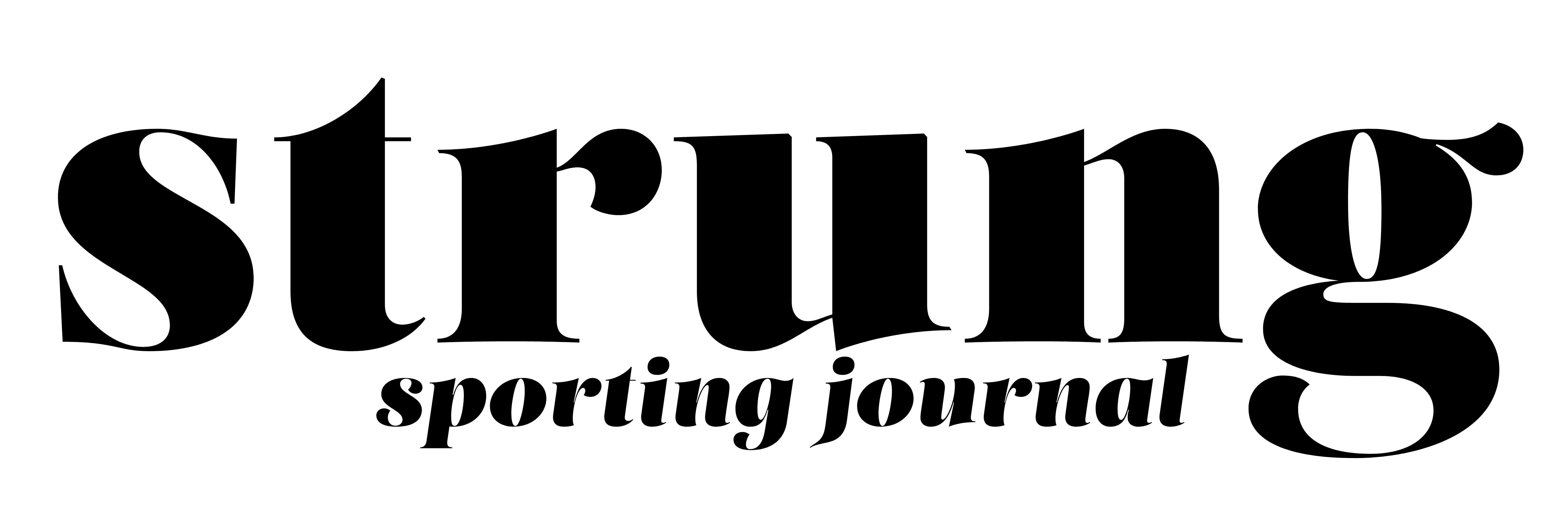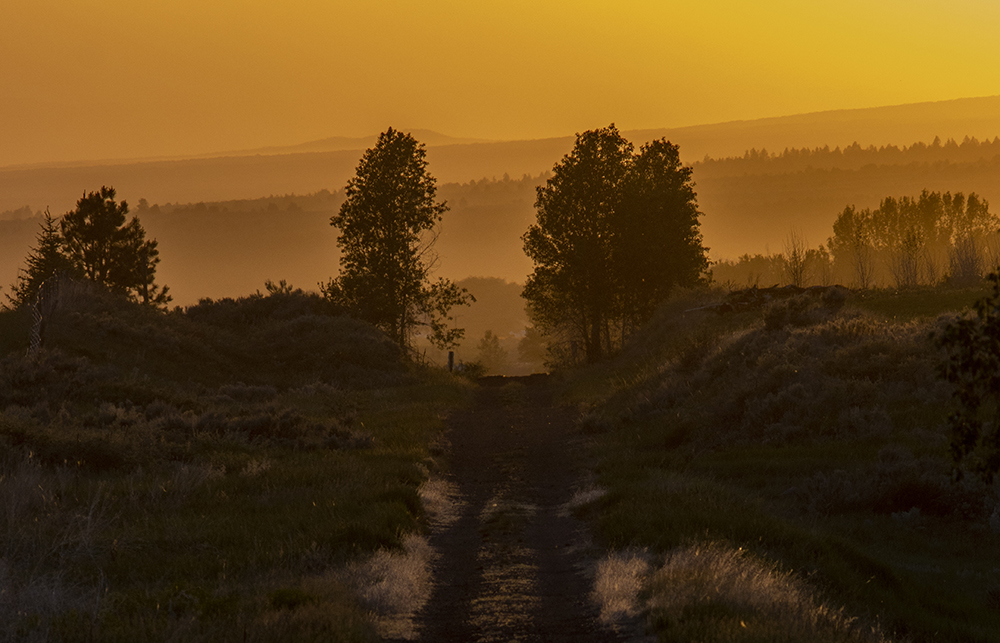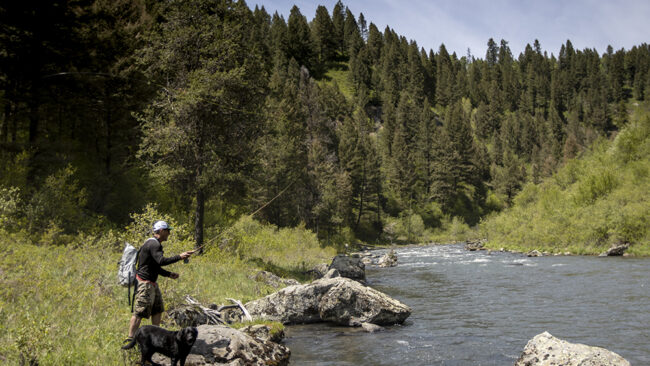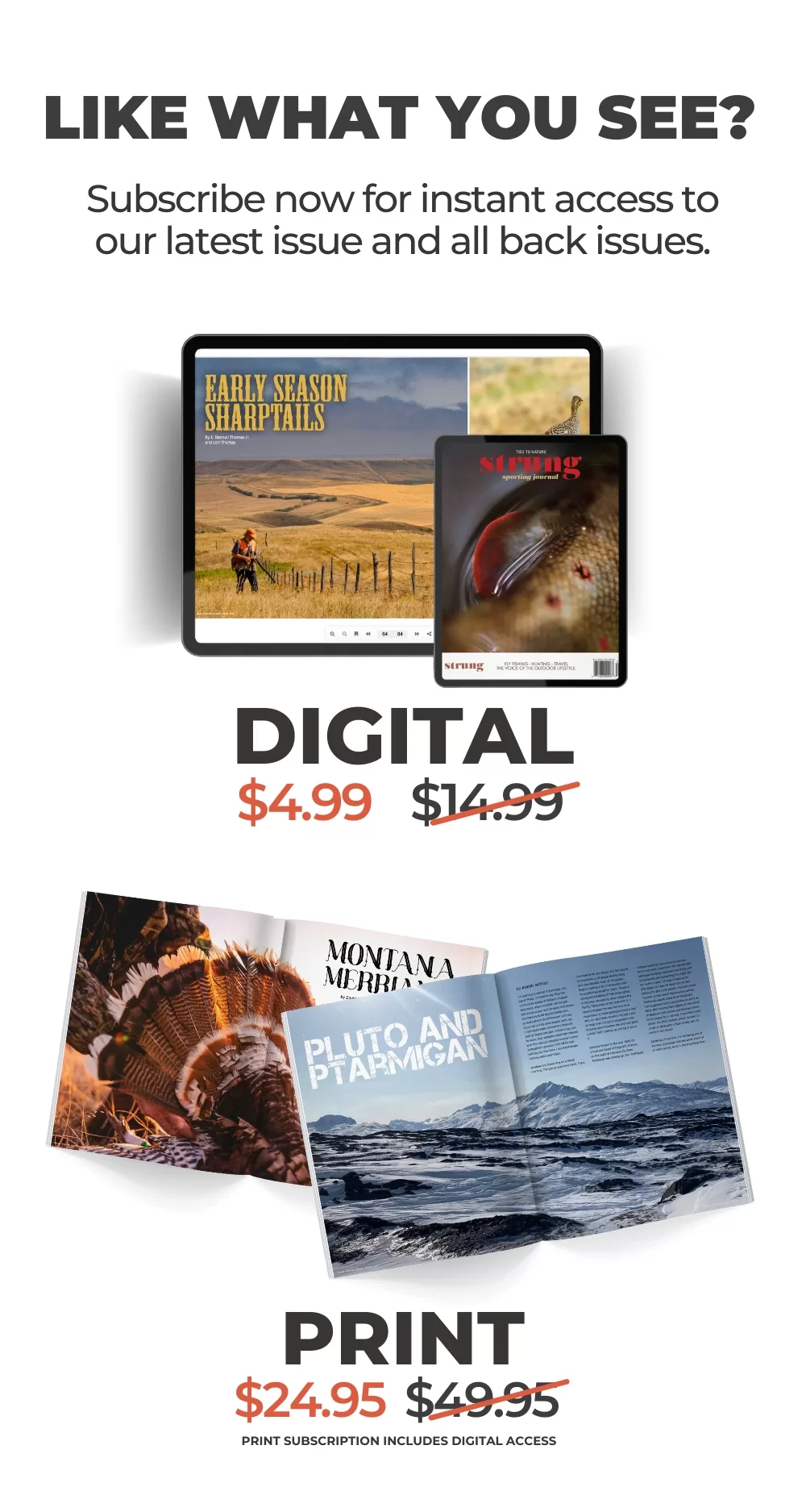Lost Bears
Island Park Adventure and Few Unanswered Questions
by Dave Zoby, Photos by Natalie Behring
In theory, a fishing story can be about a number of things. At least I hope so.
I hadn’t been to Idaho in years. The photojournalist Natalie Behring and I had been talking about doing a story on the three grizzly bears that had been poached in the Island Park area in just the last year. But the major news outlets had beaten us to it. “Is there a Serial Grizzly Bear Poacher on the Loose in Idaho?” read one headline. How do you compete with that? There was the initial outrage, theories and accusations, a few cryptic posts on social media that suggested the criminal was a local with an axe to grind. But with tourist season on the doorstep, the outrage faded, and the journalists switched to other subjects, like the lack of affordable housing and the new brewery in Driggs.
It was late May and the salmon fly hatch would, in theory, be moving upstream each day. Maybe we could catch it just right. Perhaps Natalie would like to come along and photograph? In our downtime, we made loose plans to hang around the breweries and restaurants to see if anyone would be willing to talk bears. We had calls and emails with the various agencies whose job it was to protect grizzlies. There was a $40,000 reward for anyone who could solve the poaching cases. Natalie agreed to come along and try some fishing photos, though she admitted that this wasn’t her specialty. She makes a career shooting social strife and portraits of famous people, not dudes with fish. Natalie became a photojournalist by accident. While teaching English in China she walked into the Reuters Beijing Bureau and asked if they would buy some of her images. She walked out with a job. Since then, she has covered war zones, celebrities, presidents, and rural America. She regularly lands photos in The New York Times and National Geographic. She learned Mandarin and lived in China for over a decade where she documented the rapid construction of planned cities and the concomitant pollution therein; she lived in Afghanistan for two years and flew contour routes in Apache helicopters over the starkly barren steppes of the Hindu Kush. Greenpeace’s ship, the m/v Rainbow Warrior, was her home base as she shot photos of climate change and the declining oceans. Naturally, she was drawn to the bear story. I enjoyed being around someone with such worldly experiences; my colleagues at the school where I teach back in Casper still choose Branson and Disneyland for travel.
“I don’t think anyone will talk, but we can fish and hang out,” I said.
“It might not even be a story at all,” she said.
I picked Natalie up and we loaded our camping gear into my truck. Before we headed off, we did a quick mile walk with the dogs. Her black and white dog Alonzo herded my black Lab, Henderson before sprinting ahead and laying on his belly in the dirt as we walked the road and looked for moose. Occasionally Alonzo nipped at my hands, or nibbled the inseam of my jeans, which alarmed me. I have met several cattle-dog/independent woman pairs over the last several years; it’s a thing. They have a bond that is better left unstudied.
We drove past the rolling potato fields of Eastern Idaho, the verdant croplands, the pivot irrigation, and across creeks and rivers swollen a bit and off-color with snowmelt. The distant Tetons looked odd to me; I am usually on the other side, looking west.



